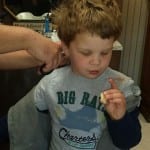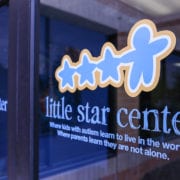By Jennifer LaMarca
I’ve been blessed to have spent the last 20 years providing early, intensive ABA programming for young children with autism in their homes. From working in Dr. Lovaas’ Young Autism Project replication site as a therapist, to being the first early, intensive ABA consultant residing in Indiana, my experiences have certainly shaped the treatment I provide. Here are 20 insights I’ve gained over those 20 years:
1. ABA is all about the play. Language gets all the attention because we certainly want to help a young child who isn’t talking, but a core symptom of autism is difficulty with social interactions. Quality early, intensive behavior programs should have at least three to five play programs running at all times.
2. ABA therapy isn’t about what you KNOW, it’s about what you can DO. It doesn’t matter if you can tell me how to play with a child or reinforce a skill…let me see you play with the child and reinforce the skill!
3. If a child can’t learn a skill one way, there are at least ten other ways to teach the same skill. A program with little to no progress for more than a week needs to be looked at and tweaked immediately.
4. Knowing about ABA or implementing a couple ABA procedures is not the same as being a behavior analyst. That would be like calling me a doctor because I know how to put on a band- aid and take a temperature.
5. Parents are always right. Except when they’re not. But trust me, one of the best things young behavior analysts can do is recognize they are in collaboration with parents rather than above them.
6. Lovaas was a trail blazer! He had the audacity to believe that applying behavioral principles at all waking hours – forty hours a week by therapists and then throughout the remainder of the day by parents – could lead to life altering progress for young children with autism…and boy was he right!
7. Parents need to do the therapy, too. The Chinese proverb applies here: “I hear and I forget. I see and I remember. I do and I understand.”
8. ABA therapy is a balance between motivation and tolerance. Look at the older books on ABA for autism and the emphasis is on compliance – attending to a task, complying to a request – but look further and motivation is mentioned, too. Look at the newer books on ABA for autism and the emphasis is on motivation – following the child’s lead, pairing with reinforcement – but look further and compliance is mentioned as well. The best behavior analysts find the right balance at the right time for the right child.
9. It’s possible to do an early, intensive ABA program and never sit at a table and chairs. When’s the last time a typically developing three-year-old sat in one place for more than two seconds? Young children are active. We should be taking advantage of that.
10. Reinforcement is anything that increases behavior…ANYTHING. Therapists should be looking every day for a new reinforcer because the options are limitless!
11. ABA is not rocket science…it’s harder. ABA is about interacting with wonderfully diverse human beings in a meaningful way. It’s not just some abstract mathematical equation that you can master over time.
12. What happens during breaks is just as important as what happens during structured time. There’s certainly a time and place for children to be free to play alone, but sometimes the best interactions and best generalization occur during the unstructured time a therapist spends with a child.
13. Best-outcome results are both possible and frequent in ABA therapy. It is true that there is no cure for autism, and, it is true that not all children with autism will benefit to the same extent from ABA therapy,but, it is also true that 30-50% of children who receive quality, early, intensive behavioral intervention will go on to regular education classrooms without support and maintain their gains into the future. Multiple studies have shown this to be true, and I’ve certainly seen it, too.
14. Before you start placing demands on a child, it’s often helpful to already be engaging with them in a meaningful way. We call this by different names, but long story short, if the kid is already having fun with you, he’s much more likely to humor you and respond to your request.
15. One-to-one ABA therapy from therapists is only one part of a comprehensive early intervention program. The other parts include parent involvement, sibling and peer play, and when the child is ready, a transition to school facilitated by an ABA therapist that lasts over a period of years.
16. If a child with autism has a sibling, consider different ways to involve them in treatment. Involving a sibling in play, teaching a sibling how to interact with his/her brother or sister, or even practicing some programs with a sibling so they get a little extra attention as well, are all ways you can potentially support brothers and sisters.
17. There are lots of gimmicks in autism treatments..and some even in ABA therapy. The behavioral principles on which ABA is founded haven’t changed. But there sure are a lot of new brand names, new strategy names, and new supplemental treatments popping up in ABA therapy. Quality ABA programs continue to provide the same thing: an intervention based on the science of behaviorism, applied in a meaningful way, and continually analyzed to make sure maximum progress is reached.
18. ABA isn’t just a therapy, it’s a way of life. Effective treatment does require parents to learn the techniques of ABA that have made their child successful. Parents do have to try to implement these strategies throughout the entire day. But this isn’t because you’re always doing therapy. It’s because when you come to understand ABA, you see its application in all aspects of life – not only your child’s, but also your own: parenting, coaching, working, teaching, spending and saving, and staying healthy just to name a few.
19. If a child learns a skill, then loses a skill, think twice about whether to teach it again. We teach basic skills so they can be used with more complex skills so they can be used and reinforced in everyday life. If a child loses a skill, then it’s not being used and/or it’s not being reinforced in everyday life. Teaching the skill again doesn’t change either of those two facts.
20. If the child cannot learn in the way we teach, we must teach in a way the child can learn. Lovaas said that over 20 years ago. It’s still the best ABA mantra I know.
Jennifer LaMarca is an in-home program manager at Little Star Center.


 One of our learners at Little Star Center-Bloomington has been working on hair cutting desensitization with his therapist. Getting to the stage where he is comfortable sitting for a haircut has been a gradual process which included allowing the therapist to touch his hair, sitting in the waiting area and touching the styling chair. The learner has been able to sit back in the styling chair at our center for two minutes without any unwanted behaviors!
One of our learners at Little Star Center-Bloomington has been working on hair cutting desensitization with his therapist. Getting to the stage where he is comfortable sitting for a haircut has been a gradual process which included allowing the therapist to touch his hair, sitting in the waiting area and touching the styling chair. The learner has been able to sit back in the styling chair at our center for two minutes without any unwanted behaviors! Recently, he and his therapist visited a local barber shop to sit in a styling chair. He successfully sat in the chair and allowed his therapist to trim his hair!
Recently, he and his therapist visited a local barber shop to sit in a styling chair. He successfully sat in the chair and allowed his therapist to trim his hair!


